Green home improvements are constantly in the news today as people want to have a cleaner environment and realize the cost savings some green home improvements can provide. Here is a list of green home improvements that can help to reduce your environmental impact and lower your utility costs:
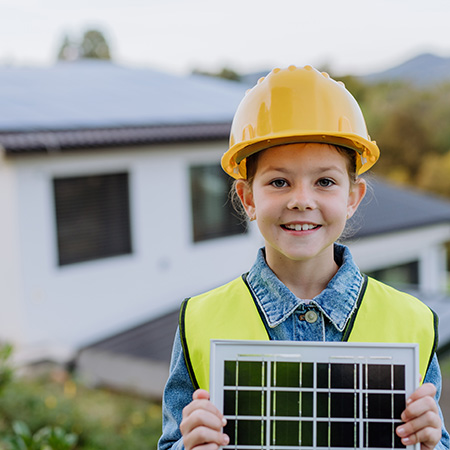 Solar panel installation
Solar panel installation
Solar panels can provide a significant portion of your home’s energy needs and can help to reduce your reliance on fossil fuels. Installing solar panels on your home can be a great way to generate clean, renewable energy and reduce your reliance on fossil fuels. There are several factors to consider before making the decision to install solar panels.
- Cost: The cost of solar panel installation can vary widely depending on the size of your home and the type of solar panel system you choose. Make sure to get multiple quotes from different solar panel companies to ensure you are getting a fair price.
- Roof condition: Before installing solar panels, it’s important to have your roof inspected to ensure it is in good condition and can support the weight of the solar panels. If your roof needs repairs, it may be necessary to address these issues before installing the solar panels.
- Sun exposure: The amount of sun exposure your roof receives will affect the efficiency of your solar panel system. Make sure to choose a location on your roof that receives the most sunlight throughout the day.
- Government incentives: Many government programs offer financial incentives, such as tax credits and rebates, to homeowners who install solar panels. Be sure to check if your area has any of these incentives and how to apply for them.
- Maintenance: Solar panel systems require very little maintenance, but it’s important to keep them clean and have them inspected periodically to ensure they are working properly.
- System Size: It’s important to determine the right size of the solar panel system for your home to match your energy consumption and budget. A professional solar installer can help you to evaluate this.
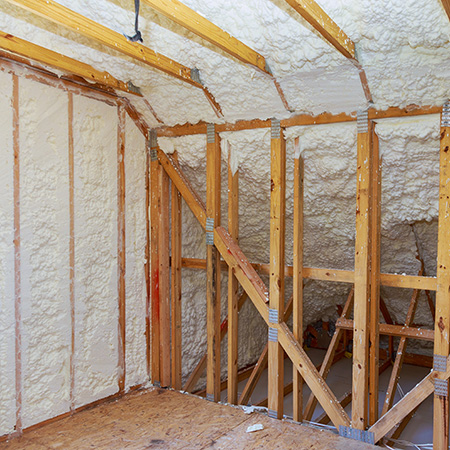 Insulation
Insulation
Proper insulation can help to keep your home warm in the winter and cool in the summer, reducing your energy consumption and lowering your utility bills. Here are some key things to consider when insulating your home:
- Type of insulation: There are several types of insulation to choose from, including fiberglass, cellulose, foam, and spray foam. Each type has its own benefits and drawbacks, so it’s important to research and choose the one that is best suited for your home and budget.
- R-value: R-value is a measure of an insulation’s thermal resistance. The higher the R-value, the more effective the insulation is at keeping your home warm or cool. Make sure to choose insulation with an R-value that is appropriate for your climate.
- Proper installation: Insulation must be installed properly to be effective. Make sure to hire a professional insulation contractor to ensure that your insulation is installed correctly and to the appropriate depth.
- Air sealing: Insulation works in conjunction with air sealing to prevent drafts and heat loss. Make sure to seal any gaps or cracks in your home’s exterior to prevent air leaks.
- A whole-house approach: Insulating your home is not only about adding insulation to the attic or walls, but also it’s important to consider all the other elements of the house, such as windows, doors, and ducts.
- Future updates: With the ever-evolving technology, new insulation types are coming up, and the old ones might not be as efficient as before. Consider future updates and choose insulation that can be easily updated in the future.
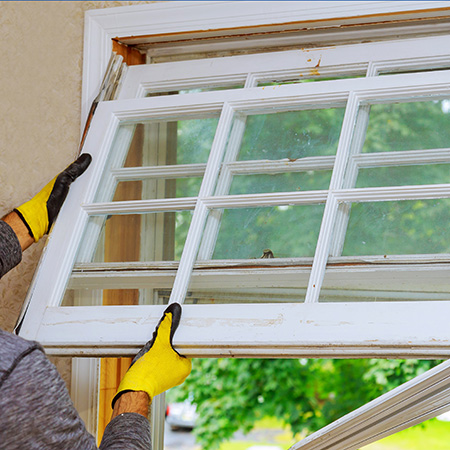 Energy-efficient windows
Energy-efficient windows
Energy-efficient windows are a great way to reduce heat loss in the winter and heat gain in the summer, which can help to lower your energy consumption and utility bills. Here are some key things to consider when choosing energy-efficient windows for your home:
- U-value: U-value is a measure of the amount of heat that is transferred through a window. The lower the U-value, the more energy-efficient the window is. Look for windows with a U-value of 0.25 or lower.
- Solar heat gain coefficient (SHGC): SHGC is a measure of the amount of solar heat that enters a building through a window. Look for windows with a low SHGC to reduce the amount of heat gain in the summer.
- Low-e coatings: Low-e coatings are a thin layer of metallic coating that is applied to the glass surface. They help to reflect heat back into the room, keeping it warm in the winter and keeping it cool in the summer.
- Double or triple glazing: Double or triple-glazed windows have two or three panes of glass, which creates an insulating barrier that helps to keep your home warmer in the winter and cooler in the summer.
- Argon or Krypton gas fill: Many energy-efficient windows are filled with argon or Krypton gas between the panes of glass. These gases are denser than air and help to improve the window’s insulation properties.
- Framing material: the frame of the window is also important; materials such as PVC, fiberglass, and wood-clad frames are better options than aluminum.
- Installation: Make sure to hire a professional window installer to ensure that your new windows are installed properly and that the air and water tightness of the window is maintained.
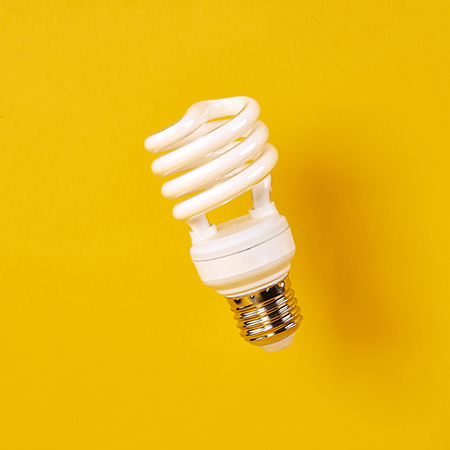 LED lighting
LED lighting
LED lighting is a great way to reduce your energy consumption and save money on your electricity bill. Here are some key things to consider when choosing LED lighting for your home:
- Wattage: LED lights use significantly less energy than traditional incandescent bulbs. When choosing LED lights, pay attention to the wattage, not the brightness. A 60-watt incandescent bulb can be replaced with a 12-watt LED bulb, for example.
- Color temperature: LED lights come in different color temperatures, measured in Kelvins (K). Warm white (2700K-3000K) is similar to traditional incandescent bulbs, while cool white (4000K-5000K) is similar to daylight. Choose the color temperature that best suits your needs.
- Lumens: Lumens measure the amount of light that a bulb produces. Make sure to choose LED lights with the appropriate lumens for the intended use and room size.
- Dimmable: LED lights can be dimmable or non-dimmable. Choose dimmable LED lights if you want to be able to adjust the brightness to suit your needs.
- Quality: Not all LED lights are created equal. Make sure to choose LED lights from reputable manufacturers to ensure that you are getting a quality product that will last a long time.
- Compatibility: Some LED lights are not compatible with all dimmer switches. Ensure that the LED light you choose is compatible with the dimmer switch you have or plan to install.
- Recycling: LED lights contain hazardous materials and should not be thrown away with regular trash; research how to recycle them properly in your area.
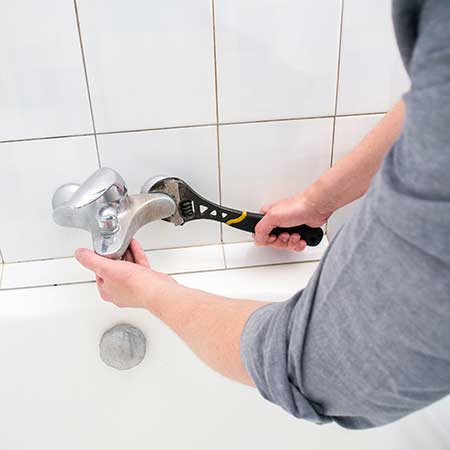 Water-saving fixtures
Water-saving fixtures
Water-saving fixtures can help to conserve water and lower your water bills. Here are some key things to consider when choosing water-saving fixtures for your home:
- Low-flow showerheads: Low-flow showerheads use less water than traditional showerheads and can save up to 2 gallons of water per minute.
- Low-flow faucets: Low-flow faucets use less water than traditional faucets and can save up to 2 gallons of water per minute.
- WaterSense labeled products: WaterSense is a label that is given to products that have been independently certified to use less water and be more efficient. Look for WaterSense-labeled products to ensure that you are getting a product that is certified to be water-efficient.
- Dual flush toilets: Dual flush toilets have two buttons, one for liquid waste and one for solid waste, which allows you to choose the right flush for the job, and use less water in the process.
- Greywater systems: Greywater systems are designed to collect and reuse greywater (wastewater from sinks, showers, and washing machines) for non-potable uses such as watering plants, flushing toilets, etc.
- Rainwater harvesting: Collecting and storing rainwater can help to reduce your reliance on municipal water supplies and lower your water bills.
- Water-saving features: some fixtures such as showerheads, faucets, and toilets come with water-saving features such as aerators, laminar flow, and low flush options. Look for these features when purchasing.
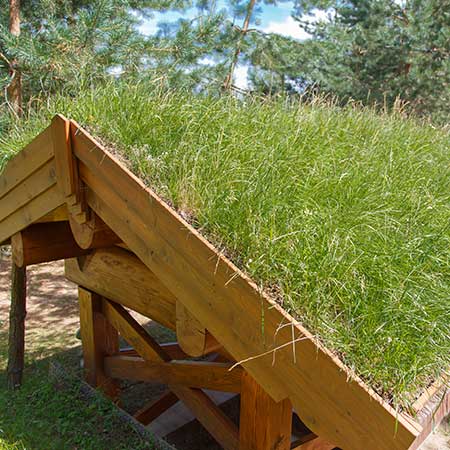 Green roofing
Green roofing
Green roofs, also known as living roofs, are a type of roofing system that includes a layer of vegetation. They can help to reduce energy consumption, improve air quality and create a beautiful outdoor space. Here are some key things to consider when choosing green roofing for your home:
- Type of green roof: There are two main types of green roofs, intensive and extensive. Intensive green roofs are thicker and can support a greater variety of plants, but they are also more expensive and require more maintenance. Extensive green roofs are thinner and require less maintenance but can only support a limited variety of plants.
- Weight load: Green roofs require a structural system that can support the additional weight of soil and plants. Make sure that your roof can support the weight load of a green roof before installing one.
- Drainage and irrigation: Green roofs require a drainage and irrigation system to ensure that the plants receive enough water. Make sure that the drainage and irrigation system is properly installed to ensure the health of the plants.
- Maintenance: Green roofs require regular maintenance, including watering, fertilizing, and weeding. Make sure you are prepared to commit to regular maintenance to ensure the health of the plants.
- Climate: Green roofs require plants that can withstand the climate in your area. Make sure to choose plants that are suitable for your climate to ensure that they thrive.
- Zoning laws and permits: Check with your local government to see if there are any zoning laws or permits that need to be obtained before installing a green roof.
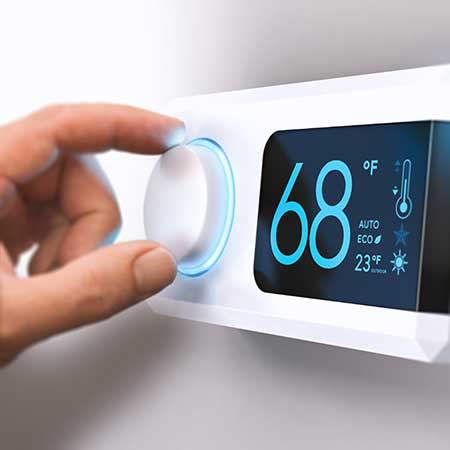 Geothermal heating and cooling
Geothermal heating and cooling
Geothermal heating and cooling systems use the steady temperature of the earth to heat and cool your home, which can be more efficient and cost-effective than traditional HVAC systems. Here are some key things to consider when choosing geothermal heating and cooling for your home:
- Ground loop: Geothermal systems require a ground loop, which is a system of underground pipes that circulate a water-based solution to transfer heat to or from the earth. The type of ground loop that you choose will depend on factors such as the size of your home, the climate, and the soil conditions in your area.
- Efficiency: Geothermal systems have a high coefficient of performance (COP), which means that they can provide up to 4 units of heat for every 1 unit of electricity consumed. This can result in significant energy savings.
- Installation: Geothermal systems require a significant amount of excavation and drilling to install the ground loop. Make sure to hire a professional geothermal contractor to ensure that the system is installed correctly.
- Cost: Geothermal systems can be more expensive to install than traditional HVAC systems, but they can provide significant energy savings over time, making them cost-effective in the long run.
- Maintenance: Geothermal systems require less maintenance than traditional HVAC systems, but they still require regular maintenance to ensure that they are working properly.
- Rebates and incentives: Many government programs offer financial incentives for the installation of geothermal systems, be sure to check if your area has any of these incentives and how to apply for them.
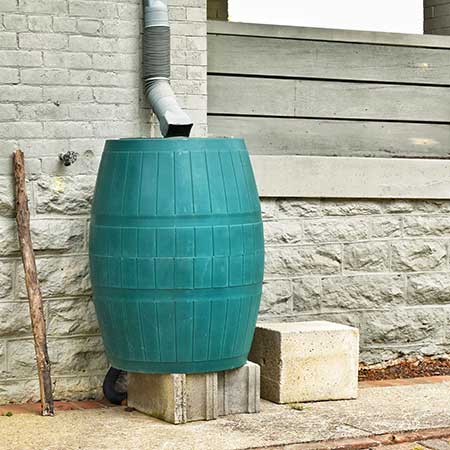 Rainwater harvesting
Rainwater harvesting
Rainwater harvesting is a way to collect and store rainwater for later use, which can help to reduce your reliance on municipal water supplies and lower your water bills. Here are some key things to consider when choosing rainwater harvesting for your home:
- Collection: The first step in rainwater harvesting is to collect the water. This can be done by installing gutters and downspouts on your roof to channel the water into a storage container.
- Storage: The collected water needs to be stored in a suitable container such as a cistern or barrel. Make sure that the container is properly sealed to prevent contamination and that it is large enough to hold the amount of water that you need.
- Filtration: The collected water needs to be filtered to remove debris and impurities. There are different types of filters available, such as screen filters, sand filters, and activated carbon filters.
- Pumping: Depending on the use, the water may need to be pumped to an elevated location or to a different location in the house. Make sure to choose a pump that is suitable for your needs.
- Treatment: Rainwater is not potable, therefore it needs to be treated before using it for drinking or cooking, to prevent illness.
- Compliance: Check with your local government to see if there are any laws or regulations that need to be followed when installing a rainwater harvesting system.
 Smart home technology
Smart home technology
Smart home technology refers to the use of internet-connected devices to control and automate various aspects of a home, such as lighting, heating, security, and appliances. Here are some key things to consider when choosing smart home technology for your home:
- Compatibility: Make sure that the smart home devices you choose are compatible with your existing home technology and can be easily integrated.
- Ease of use: Smart home devices should be easy to set up and use. Look for devices with user-friendly interfaces and clear instructions.
- Security: Smart home devices can collect sensitive information such as personal data, ensure that the devices have strong security features and regularly update the firmware to prevent hacking.
- Automation: Smart home devices can be programmed to work together and automate tasks, such as turning off lights when you leave the house or adjusting the thermostat when you are away.
- Scalability: Consider the possibility of adding new devices or expanding the system in the future, and ensure that the devices you choose can be easily integrated into your existing smart home system.
- Cost: Smart home technology can vary in price, consider the cost of the devices and installation and ensure that the devices you choose fit within your budget.
In summary, Green home improvements are a way to reduce environmental impact and lower utility costs. Some popular green home improvements include solar panel installation, insulation, and energy-efficient windows. If you want to go green, there have been great breakthroughs, and long-term cost savings can be significant.
The SANI-TRED System is waterproofing and repair products for all your home improvement needs. Have questions on your upcoming eco-friendly home improvement upgrades? Do not hesitate to call our experts.

